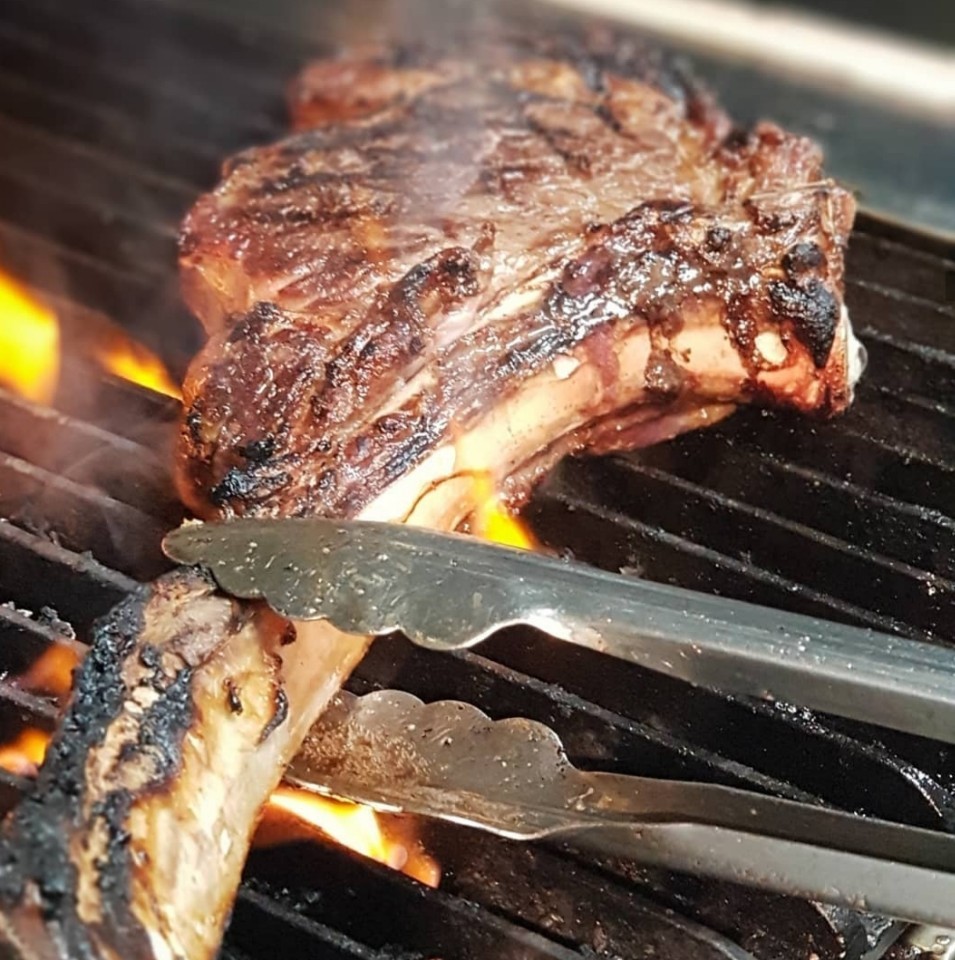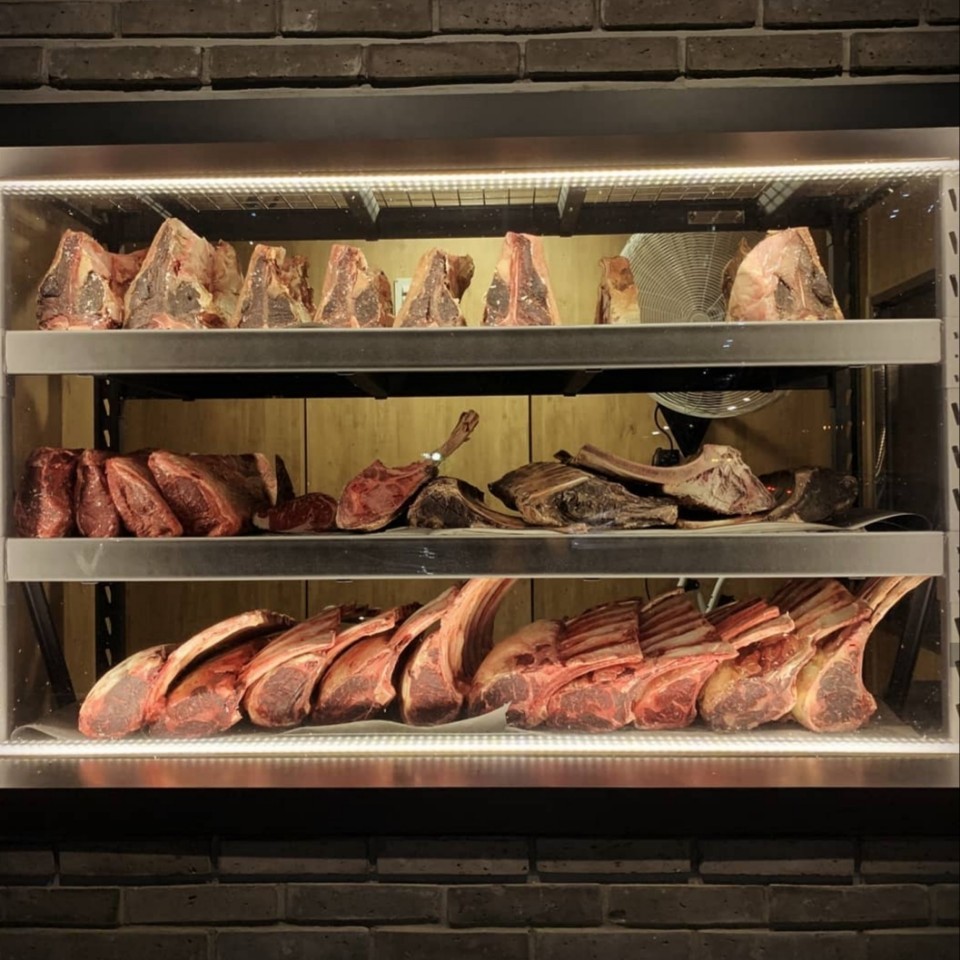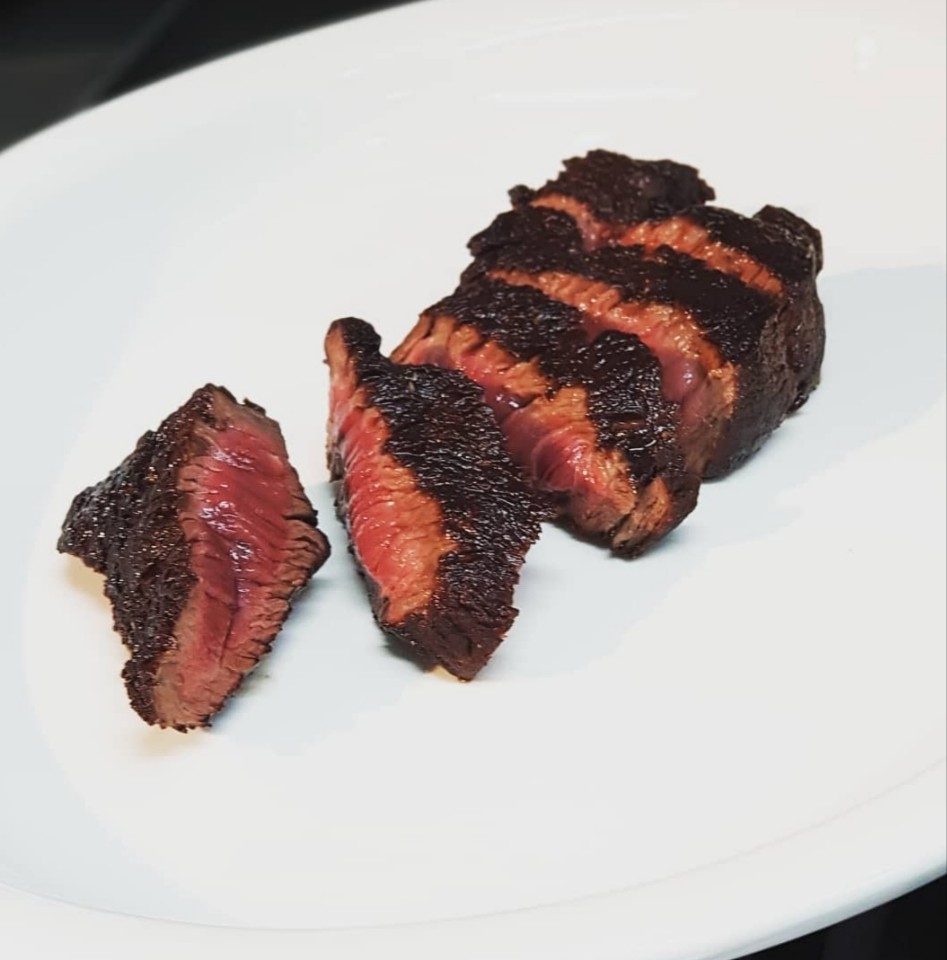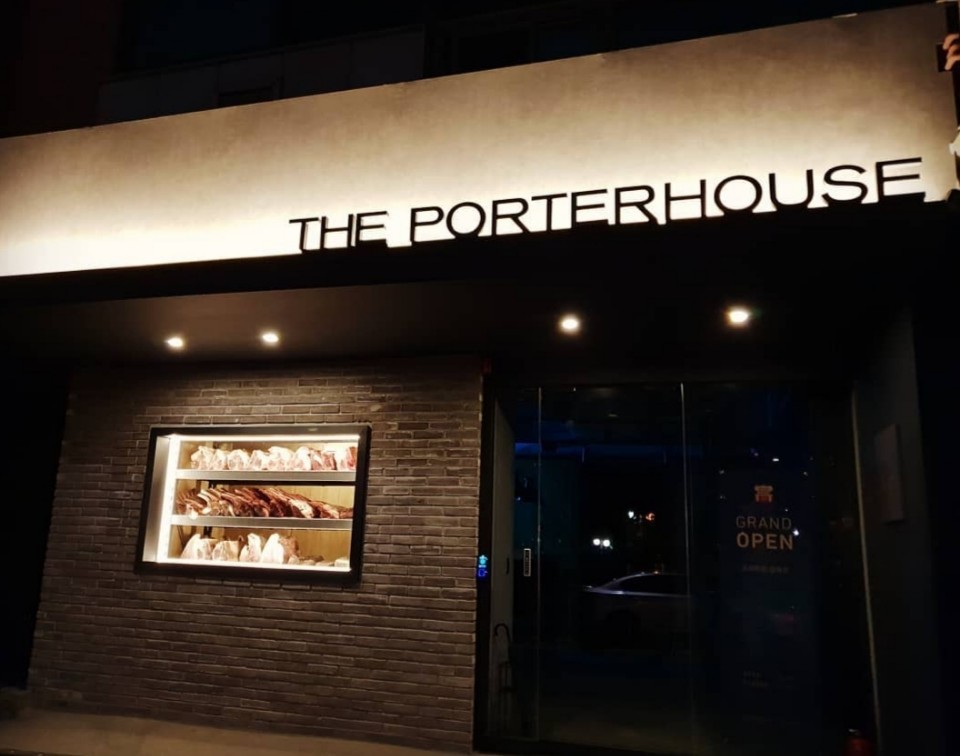Dry-aged steak at home
Tomahawk, porterhouse and burgers at The Porterhouse Butcher and More
By Jean OhPublished : June 12, 2020 - 09:01

Tackling the art of enjoying dry-aged steak at home was worth every sumptuous, succulent bite.
The instructions given by the staff at The Porterhouse Butcher and More were straightforward.
Remove the steak, a glorious almost 700 gram porterhouse that had been dry-aged for 10 weeks, from the refrigerator two hours in advance, then dress that naked hunk of meat with olive oil and salt.
Heat skillet on high heat and coat with plenty of olive oil, slide steak in and flip every minute until six minutes have passed, basting the steak with olive oil from the pan often.
After six minutes, turn off the heat, cover the steak with a lid and let rest for two minutes.
During those brief six to eight minutes, an intense aroma of funky mature cheese emanated from the slab of beef.
The finished steak, which was over an inch thick, boasted an incredibly crisp crust and a juicy interior.
The tenderloin portion of the porterhouse was velvety and soft while the top loin portion boasted an intense, beefy flavor that tapered off into a cheesy end note.

“The porterhouse is gleaned from the short loin,” The Porterhouse Butcher and More CEO Choi Won-yeob, 40, explained in an email interview. “It is essentially a T-bone cut, the T-shaped bone of this cut has striploin on one side of the bone and the tenderloin on the other side.”
Regarding the detailed instructions provided by the staff on how to prepare the steak, Choi delved into the reasoning behind it all.
He started by stressing the importance of “tempering” the meat, which essentially means getting the meat to the temperature one desires, internally and externally, before cooking it.
“If the interior of the meat is cold when grilled on a hot skillet, you lose some of the juices and it is hard to cook it evenly,” Choi explained. “That is why we recommend removing the meat in advance.”
In regards to basting, Choi said, “Basting renders the exterior of the meat crispy while preventing the juices from escaping.”
This attention to detail seems key, when dry-aged steaks -- considered a delicacy -- can cost around 70,000 won to 300,000 won when ordered at a steakhouse in Seoul.
There would be nothing worse than to invest in some premium beef -- Choi’s dry-aged steaks clock in at around 66,000 to 100,000 won for around 600 to 800 grams-- only to ruin the steak when grilling it at home.
“We provide explanations based on testing we have done,” Choi said. Instructions are given for each cut of meat purchased.
While dry-aged steak is not new to Korea, it is something of a luxury reserved primarily for steakhouse dining, especially given the costliness of this style of steak.
Now, beef aficionados like Choi are taking dry-aged beef into the home.
Choi launched his butcher shop and one table restaurant hybrid over a year ago in Seoul’s Samseong-dong after racking up experience importing USDA Prime beef.
Choi and three other partners started out by bringing USDA Prime beef into Korea, Choi explained, and this beef served as the foundation for The Porterhouse.
Dry-aged cuts include the porterhouse, T-bone, L-bone and tomahawk steaks while tenderloin, rib-eye, striploin, short ribs and brisket are wet-aged, said Choi.
Aging meat basically translates to more tender steak as natural enzymes break down the muscle’s connective tissue during the process.

Wet-aging involves placing the beef in a vacuum-sealed package for aging.
When beef is dry-aged, it is left naked in a controlled environment, which leads to loss of moisture, which, in turn, results in a more concentrated beefy flavor. Conversely, the beef also loses weight during that period making it more expensive.
In addition to aged beef, The Porterhouse also sells hamburger patties and ragu sauce.
“The most notable thing about our patties is that we use bacon chips,” said Choi, who added that their burgers are made from USDA Prime beef.
At the moment, customers can order their meat by phone delivery. Plans are to launch an online store in early July.

The Porterhouse Butcher and More
1F, 27 Samseong-dong, Gangnam-gu, Seoul
(02) 511-0409
Butcher shop open 10:30 a.m. to 8:30 p.m. daily, closed Sundays
Dry-aged porterhouse and tomahawk steaks cost around 66,000 won to 100,000 won for approximately 600 grams to 800 grams, 120 gram burgers cost 5,000 won per patty.
Same day delivery is available in the Seoul area for all meat, except patties and ragu sauce, on orders placed by phone. Outside of Seoul, next day delivery is available. Delivery charges apply.
By Jean Oh (oh_jean@heraldcorp.com)











![[Today’s K-pop] BTS pop-up event to come to Seoul](http://res.heraldm.com/phpwas/restmb_idxmake.php?idx=644&simg=/content/image/2024/04/17/20240417050734_0.jpg&u=)




![[KH Explains] Hyundai's full hybrid edge to pay off amid slow transition to pure EVs](http://res.heraldm.com/phpwas/restmb_idxmake.php?idx=652&simg=/content/image/2024/04/18/20240418050645_0.jpg&u=20240418181020)

![[Today’s K-pop] Zico drops snippet of collaboration with Jennie](http://res.heraldm.com/phpwas/restmb_idxmake.php?idx=642&simg=/content/image/2024/04/18/20240418050702_0.jpg&u=)